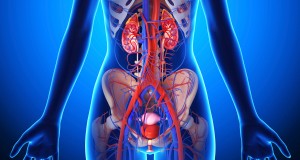Male and Female Urinary Incontinence
 Urinary Incontinence is the involuntary leakage of urine and it affects over 18 million adults; the condition occurs when the sphincter muscle, which holds the bladder neck, is not strong enough to retain urine in the bladder, creating incontinence. Eighty-five percent of those afflicted are female. Incontinence can occur when the sphincter is too weak, the bladder muscles contract strongly, or the bladder is not emptied regularly. Incontinence is often related to a medical problem or a treatment involving the prostate gland, BPH, or prostate removal during cancer.
Urinary Incontinence is the involuntary leakage of urine and it affects over 18 million adults; the condition occurs when the sphincter muscle, which holds the bladder neck, is not strong enough to retain urine in the bladder, creating incontinence. Eighty-five percent of those afflicted are female. Incontinence can occur when the sphincter is too weak, the bladder muscles contract strongly, or the bladder is not emptied regularly. Incontinence is often related to a medical problem or a treatment involving the prostate gland, BPH, or prostate removal during cancer.
Within men, there is a link between incontinence and erectile dysfunction. To learn more about ED click here.
- Stress Incontinence – Occurs when the accidental release of urine is caused by pressure applied to the bladder, most often when you cough, sneeze, laugh, or lift something heavy
- Urge Incontinence – Occurs when the bladder contracts at the wrong time and gives you the feeling that you have to urinate immediately even if your bladder is empty
- Overflow Incontinence – When the bladder is not properly emptied there can be leaking – this can be due to other conditions such as an enlarged prostate
- Total Incontinence – This is continual leakage due to complete sphincter deficiency
- Hypermobility – Can result from childbirth, pelvic surgery, or hormonal changes
- Intrinsic Sphincter – Also called ISD, refers to the weakening of the urethral sphincter muscles or closing mechanism
- Pelvic Prolapse – Occurs when the uterus, bladder, or rectum slip down into the vaginal space and can cause pelvic pressure or incontinence. This problem affects over 3 million women in the United States.
TREATMENT
Incontinence is treated in several ways which can help you return to a more natural lifestyle. Treatment options include behavioral modification, physical therapy, medication, and minimally-invasive surgery.
To receive a consultation with a physician you may schedule an appointment at either our Macon or Warner Robins locations. You may also learn more about Male Continence here.
